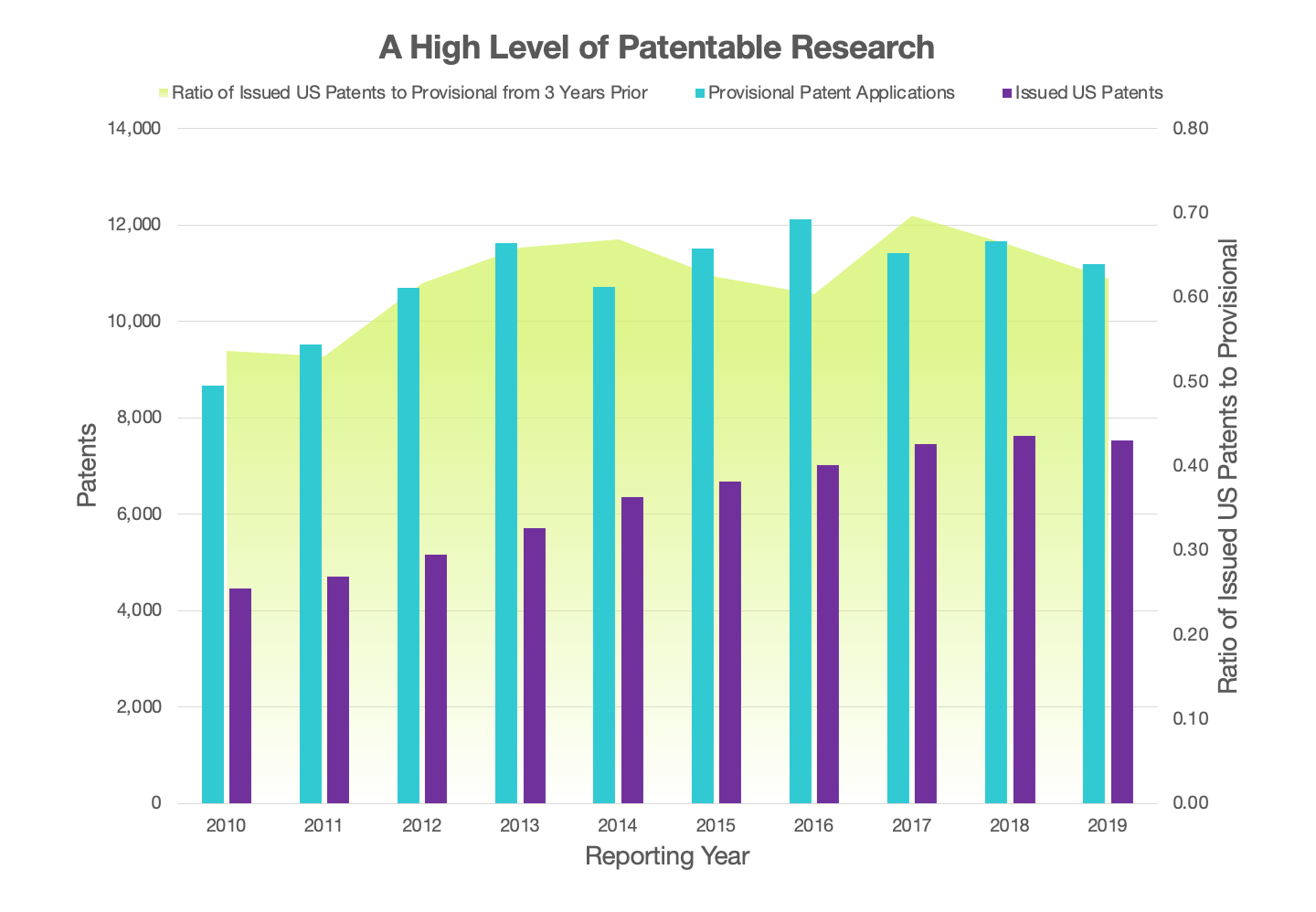 Patents
Patents
Continuing to Protect Cutting-Edge Inventions
A key step in the transfer of technology is the protection of new inventions. Patent protection provides both economic opportunities for sponsoring research institutions and an incentive for entrepreneurs and companies to invest in new technologies.
Overall patent activity — provisional patent applications, utility patent applications, and US issued patents — have remained at the same high-level of activity for the past five years. However, we may begin to see a plateau, or even a decline, in the years ahead given the trends seen in disclosures submitted to tech transfer offices (TTOs).
Key Findings
- The number of provisional patent applications, gross patent expenses and net patent expenses remain at a steady state, implying that the TTOs continue to implement the same general patent strategy.
- United States Patent and Trademark Office data indicates a lead time of approximately three years from provisional patent application to issued patent. Applying this timeline to the AUTM data indicates that TTOs have been fairly consistent over the past five years in how provisional patent applications are prosecuted to issued patents. Looking back from 2019’s issued patents to the provisional patent applications from three years prior, we estimate the ratio of issued patents to provisional patent applications to be about 2-to-3. This implies a high level of patentability of inventions coming out of research institutions.
- The US continues to be the primary market in which research institutions focus, with US patent applications accounting for approximately 62% of total filings.
- Notably, patent-related prosecution fee reimbursements grew to $216 million, and increase of 11% over 2018.


